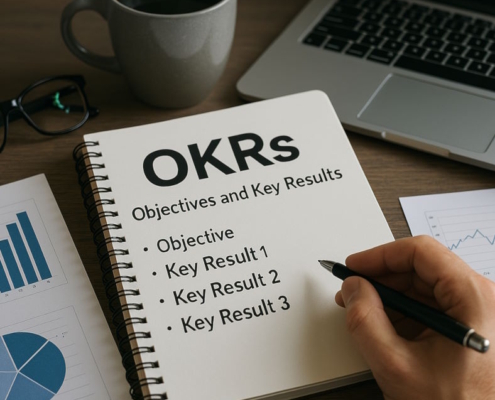What is a sole proprietorship?
A sole proprietorship means someone who owns an unincorporated business by himself or herself. A sole proprietorship is a business that can be owned and controlled by an individual.
Author: Brad Nakase, Attorney
Email | Call (888) 600-8654
The legal status of a sole proprietorship can be defined as follows: It is not a separate legal entity from the business owner. A sole proprietorship is a non-registered, unincorporated business run solely by one individual proprietor with no distinction between the business and the owner. The sole proprietorship is the simplest business form under which one can operate a business. Sole proprietorships do not produce a separate business entity. You can be held personally liable for the debts and obligations of the business. This means your business assets and liabilities are not separate from your personal assets and liabilities.
In this article, our Los Angeles business attorney discuss sole proprietorship as follows:
What Is a Sole Proprietorship in Business?
According to the IRS, a sole proprietor is someone who owns an unincorporated business by himself or herself. A sole proprietorship is a non-registered, unincorporated business run solely by one individual proprietor with no distinction between the business and the owner. A sole proprietorship is an unincorporated business with only one owner who pays personal income tax on profits earned.
A sole proprietorship, also known as a proprietorship is an unincorporated company that has only one owner. This owner pays personal income tax on the business’ profits. Often, sole proprietors conduct business using their personal names because they do not need to create a unique trade or company name.
A sole proprietorship is one of the easiest business entities to create and get rid of. This is because of very little government regulation. Because of this, sole proprietorships are one of the most popular entity types among entrepreneurs, consultants, and self-contractors. A majority of small businesses begin as sole proprietorships and then expand into a limited liability company or corporation.
If an individual wishes to begin a single-owner business, then the easiest option is a sole proprietorship. A sole proprietorship starts right as the entrepreneur begins conducting business. In fact, there is no need to file state or federal documents, and there are very few regulatory duties. This is a great option for entrepreneurs who are just getting started.
A sole proprietorship is a lot different from a limited liability company, a corporation, and a limited liability partnership. Largely, this is because no separate entity is created with a sole proprietorship. This means that a sole proprietorship’s owner is not protected from their business’ liabilities and obligations.
For instance, the company’s debts count as the owner’s debts. That said, the company’s profits also belong to the owner because all profits go directly to the owner.
Key Points
- A sole proprietorship is an unincorporated entity type that has only one owner. This owner pays personal income tax on the company’s profits.
- Sole proprietorships are easy to create and take apart thanks to lax government regulation. This means they are very popular with entrepreneurs.
- One of the big disadvantages of sole proprietorships is that there is no government protection because they are not registered. This means that the owner is responsible for all the company’s liabilities.
- Sole proprietors document their income and expenses on personal tax returns and pay income and elf-employment taxes on the company’s profits.
What Are the Pros and Cons of a Sole Proprietorship?
Pros
- Easy to start a small business.
- Owner has complete control and flexibility to run the business.
Cons
- Owner is personally liable for business debts and liabilities.
- Creditors can go after your personal assets.
The owner of a sole proprietorship does not have to complete a bunch of paperwork to register the company with the state in which it operates. Depending on the kind of business and the particular state, a business owner may have to get a permit or license. However, less overall paperwork means that a business can get going faster.
The process of filing taxes is also a lot simpler with sole proprietorships because a company does not have to get an employer identification number (EIN) from the IRS. A business may still choose to get an EIN, but a businessperson may choose to instead use their own Social Security number to file taxes. That said, there are other important reasons to file for an EIN. If a business owner wishes to sell taxable products, he or she will have to register for a sales tax license with the state. Also, if a business owner intends to hire employees, he or she will need to get an EIN from the IRS.
A sole proprietorship does not require a company checking account, which other entity types need. A business owner can simply manage their finances through their personal bank account.
The cons of running a sole proprietorship include the lack of liability protection and the trouble involved in getting access to capital financing, especially via issuing equity and getting credit lines or bank loans.
When a company goes through the registration process, it enjoys some protections. A sole proprietorship, with no registration, offers no liability protection to its owner. Conversely, an LLC offers protection to its owner against creditors who attempt to seize the owner’s personal assets, like their car or house.
It can be hard for a sole proprietorship to access financing. Banks tends to prefer working with businesses that have an established track record. They typically consider those just getting off the ground with a meager balance sheet to be risky borrowers. It can also be hard to get equity from big investors.
This means that entrepreneurs who start out as sole proprietors risk unlimited liability. But as the business expands, it is common for it to become a limited liability company or a corporation.
How to Switch from Sole Owner to Limited Liability Company (LLC)
Normally, when a business owner wants to incorporate his or her business, they must restructure the company into a limited liability company. To be successful, the owner needs to first make sure the name of the business is free for use. If the name is available, then the owner must then file articles of organization with the secretary of state’s office in the state where the company operates.
After the appropriate paperwork has been submitted, the owner needs to form an operating agreement, which identifies the company’s structure. The last step will be to get an EIN from the Internal Revenue Service.
Summary
A sole proprietorship is a simple, easy way for a new entrepreneur to start a business. There is no need to register the company with the state, and in general, there is overall less bureaucratic hassle involved. There are some negatives, such as liabilities passing through to the individual and difficulty getting funding. However, those risks are not as big a deal for newer businesses just getting off the ground. But as the business expands, it may be a good idea to switch entity types.
Have a quick question? We answered nearly 2000 FAQs.
See all blogs: Business | Corporate | Employment Law
Most recent blogs:
Contact our attorney.































